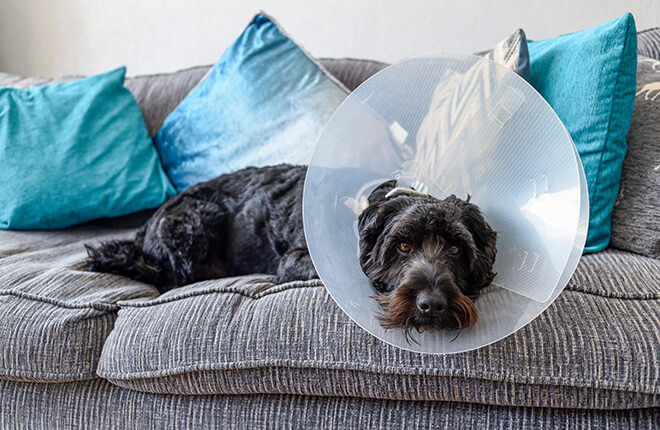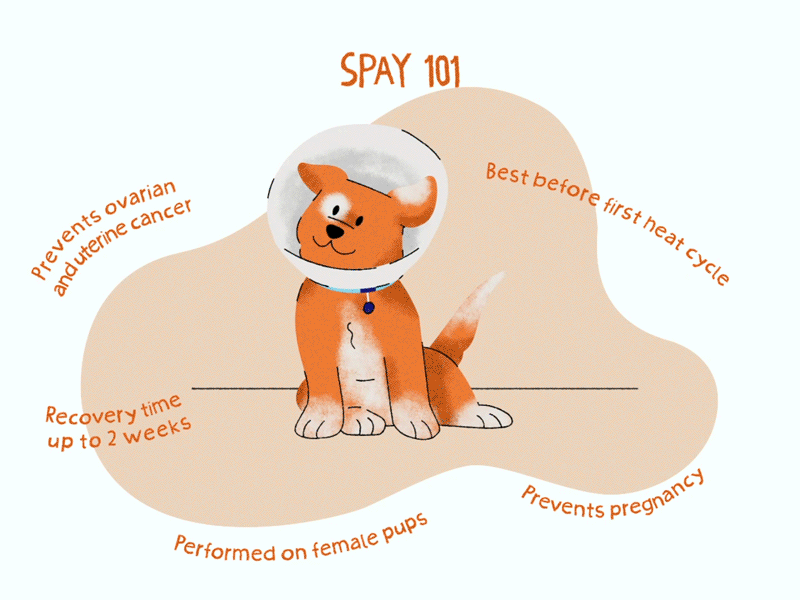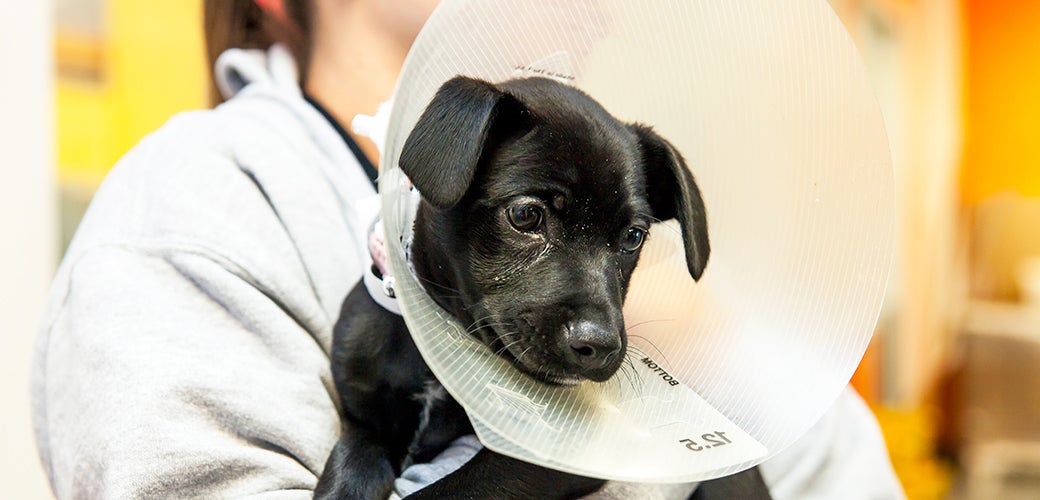Neuter procedures are common veterinary surgeries that sterilize pets, preventing them from reproducing. The surgical process involves the removal of the reproductive organs in female pets (spaying) or male pets (castration) to prevent unwanted pregnancies and to control behavior.
This procedure is recommended for several reasons, including population control, prevention of certain diseases, and reduction of behavioral problems. Neutering your pet can also lead to a longer, healthier life. It is a routine surgery performed by licensed veterinarians under anesthesia, with minimal risks and a quick recovery time.
Following the surgery, pet owners should provide proper post-operative care to ensure a smooth healing process.

Credit: www.zoetispetcare.com
Contents
What Is A Neuter Procedure?
What is a Neuter Procedure?
A neuter procedure, also known as neutering or castration, is a surgical technique performed on male pets to remove their reproductive organs. It is a routine procedure that is recommended for pets, especially those that are not intended for breeding purposes. Neutering is an effective and safe method of birth control for male pets, offering several health benefits and behavioral improvements. In this section, we will discuss the definition of a neuter procedure as well as its purpose.
Definition Of Neuter Procedure
A neuter procedure involves the surgical removal of a male pet’s testicles. It is performed under general anesthesia by a licensed veterinarian. The incisions made during the procedure are typically small and heal quickly, minimizing post-operative discomfort. Neutering is a permanent procedure that prevents the male pet from reproducing, as it eliminates the production of sperm. This procedure is most commonly performed on dogs and cats, but it can also be done on other male animals such as rabbits and guinea pigs.
Purpose Of Neutering
The primary purpose of neutering is to prevent the male pet from fathering unwanted litters. By removing the testicles, the production of sperm is eliminated, reducing the chances of unplanned breeding. Neutering also offers a range of health benefits for male pets. For example, it can reduce the risk of certain reproductive cancers and infections. Furthermore, neutering can help improve the pet’s behavior by reducing aggressive tendencies, marking behavior, and roaming. It promotes a calmer and more manageable pet that is less likely to engage in territorial disputes or wander off.
Preparing For The Neuter Procedure
Preparing your pet for the neuter procedure is an important step towards ensuring their health and well-being. By following the proper guidelines and consulting with your veterinarian, you can help your furry friend go through the procedure smoothly. Here are some essential steps to take before the neuter procedure.
Consultation With The Veterinarian
Before scheduling the neuter procedure for your pet, it is crucial to have a consultation with your veterinarian. This step allows you to discuss any concerns you may have and ask important questions regarding the procedure. During the consultation, the veterinarian will assess your pet’s health and determine if they are in the optimal condition for the surgery.
If you have any specific concerns or medical history that might affect the procedure, it’s important to communicate them to your veterinarian. Open communication ensures that your pet receives the best possible care and that the neuter procedure is tailored to their needs.
Preoperative Instructions
Prior to the neuter procedure, your veterinarian will provide you with preoperative instructions to follow. These instructions are crucial for preparing your pet for the surgery and ensuring their comfort and safety throughout the process.
Here are some common preoperative instructions that you may receive:
- Fast your pet: Your veterinarian may advise you to withhold food and water from your pet for a specific period before the surgery. This fasting period helps prevent any complications during the procedure.
- Administer medication: Depending on your pet’s health and individual needs, your veterinarian may instruct you to administer specific medications prior to the surgery. These medications may include pain relief or antibiotics to reduce the risk of infection.
- Proper rest: Ensuring that your pet stays calm and rested before the neuter procedure is essential. Avoid excessive physical activities and provide a comfortable and quiet environment to help minimize stress.
- Follow grooming instructions: Your veterinarian may recommend specific grooming instructions before the surgery. These instructions may include trimming your pet’s fur around the surgical site to reduce the risk of contamination.
By carefully following these preoperative instructions, you are actively participating in your pet’s care and contributing to a successful neuter procedure. Remember to ask any questions you may have and seek clarification from your veterinarian to ensure that you are fully prepared.
The Neuter Procedure Day
My pet recently underwent the neuter procedure, a quick and safe surgical process that helps control the pet population and provides various health benefits. The day went smoothly, and my furry friend is now on the way to a healthier and happier life.
Anesthesia And Sedation
On the day of the neuter procedure, your pet will be given anesthesia and sedation. This is to ensure they are calm and comfortable during the surgery. Anesthesia is a medical term used to describe the temporary loss of sensation or the inability to feel pain. In this case, it allows the veterinarian to perform the procedure without causing any distress to your furry friend. Sedation, on the other hand, helps to relax your pet and keep them still during the surgery. It is administered either through injections or inhalation, depending on the vet’s preference and your pet’s condition.Surgical Process
The surgical process itself involves removing a male animal’s testicles, which is known as castration or neutering. This procedure helps to prevent unwanted behaviors, such as marking territory, aggression, and roaming, while also reducing the risk of certain diseases. During the surgery, your pet will be placed on an operating table and the veterinarian will make a small incision in the scrotum. This allows them access to the testicles, which they will carefully remove. The incision is then closed with either stitches or surgical glue, which will eventually dissolve on its own. The entire process usually takes less than an hour, and your pet will be closely monitored throughout to ensure their safety and well-being. Remember that the neuter procedure day may vary depending on the veterinarian’s schedule and your pet’s health condition. It’s crucial to follow any pre-surgery instructions given by your vet, such as fasting your pet before the surgery. This helps to minimize the risks associated with the procedure and ensures a smoother recovery for your furry companion. Now that we’ve covered the anesthesia and surgical process, let’s move on to the next steps of the neuter procedure and what you can expect during the recovery period.
Credit: www.banfield.com
Recovery And Aftercare
After undergoing a neuter procedure, proper recovery and aftercare for your furry friend are crucial to ensure a smooth healing process and their overall well-being. Following postoperative care instructions and monitoring for complications are essential aspects of providing the best possible care for your pet. Let’s take a closer look at what you need to know about the recovery process and how to support your pet during this time.
Postoperative Care Instructions
Following the neuter procedure, it is important to provide your pet with a comfortable and quiet space for recovery. Keep them in a warm environment, away from excessive noise and activity that might cause stress or hinder their healing process.
Here are some postoperative care instructions to follow:
- Limit your pet’s physical activity for the first few days to allow proper healing. Avoid strenuous exercise or jumping that could strain the incision site.
- Ensure your pet wears an Elizabethan collar, also known as a cone or e-collar, to prevent them from licking or biting the incision area. This will minimize the risk of infection and promote uneventful healing.
- Monitor the incision site daily for any signs of redness, swelling, discharge, or excessive bleeding. If you notice any abnormalities, contact your veterinarian immediately.
- Administer any prescribed medications, such as antibiotics or pain relievers, as instructed by your veterinarian. Follow the dosage and schedule carefully to help manage your pet’s pain and prevent infection.
- Provide your pet with a specific postoperative diet if recommended by your veterinarian. Proper nutrition is essential for their recovery and can promote a healthy immune response.
- Ensure your pet has access to fresh water at all times to stay hydrated, as this aids in the healing process.
Monitoring For Complications
While the majority of pets recover smoothly from a neuter procedure, it is important to monitor for any signs of complications. Being attentive to your pet’s behavior and appearance can help you identify potential issues early on.
Here are some signs to watch out for:
- Persistent or excessive bleeding from the surgery site
- Inflammation, redness, or heat around the incision area
- Significant swelling or fluid accumulation
- Discharge with a foul odor or unusual color
- Prolonged or worsening pain, as evidenced by continuous whimpering or difficulty moving
- Loss of appetite or refusal to eat
- Unusually lethargic behavior
If you notice any of these symptoms or any other abnormal behavior, it is crucial to contact your veterinarian promptly. A thorough examination by a professional can help identify and address any complications before they worsen.
By following proper postoperative care instructions and diligently monitoring your pet for any complications, you can help ensure a successful and uneventful recovery after their neuter procedure. Remember, your veterinarian is your best resource for guidance and support throughout this crucial period.

Credit: www.aspca.org
Frequently Asked Questions For Neuter Procedure My Pet Went Through
How Long Does It Take For A Dog To Heal After He’s Been Neutered?
A neutered dog typically takes around one to two weeks to heal completely from the surgery. This period may vary depending on the individual dog and the specific procedure. During this time, it is important to follow vet instructions for proper care and ensure that the dog rests and avoids rigorous activities.
What Is The Protocol After A Dog Gets Neutered?
After a dog is neutered, it is important to provide proper care. Keep the dog calm and restrict activity for a few days. Offer pain medication and monitor the incision for any signs of infection. Follow-up visits with the vet are crucial for a healthy recovery.
What Do Vets Do With Dog Balls After Neutering?
After neutering, vets dispose of dog balls as medical waste according to regulations. This ensures proper hygiene and prevents infections or complications. It’s a routine procedure commonly performed by veterinarians to control breeding and improve the overall health of dogs.
Conclusion
The neuter procedure is a common operation for pets that brings numerous benefits. Our furry friends experience improved health, reduced risks of certain diseases, and behavioral improvements post-operation. It’s crucial for pet parents to understand the importance of neutering their pets.
By opting for this procedure, we not only promote responsible pet ownership but also contribute to controlling the pet overpopulation crisis. Remember, neutering your pet is a decision that positively impacts their well-being and the community as a whole.

